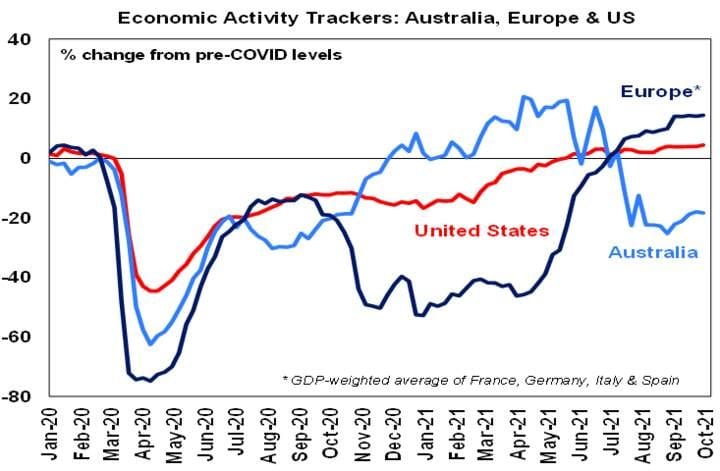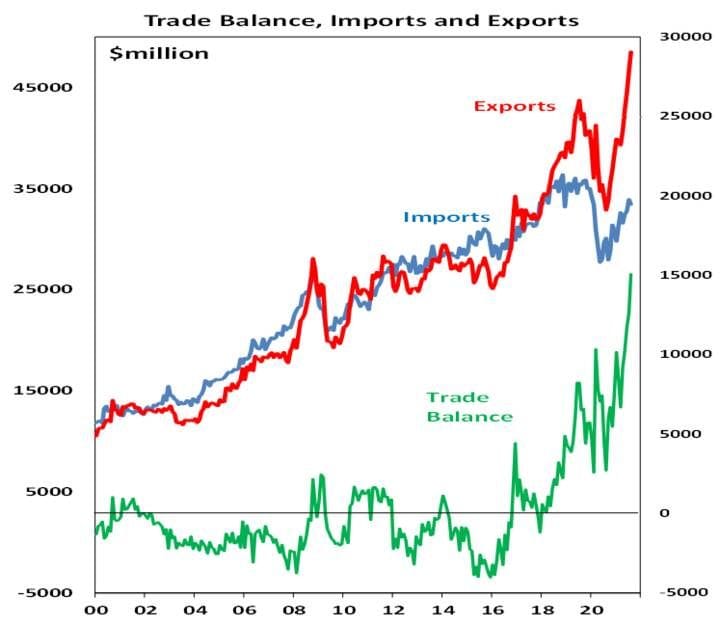- The news on coronavirus is mostly good. New global coronavirus cases are trending down with most regions flat or falling. This includes the US, although Europe is edging up again.

Source: ourworldindata.org, AMP Capital
- Modern medicine seems to be getting the upper hand against coronavirus – with vaccines helping to keep hospitalisations and deaths down in more heavily vaccinated countries and US states, booster shots being rolled out to help deal with declining vaccine (mainly Pfizer) efficacy after about 5 to 6 months (notably in Israel) and a new Merck drug appearing to reduce the risk of coronavirus hospitalisation and death in clinical trials by 50% and now seeking approval for emergency use. Hospitalisations and deaths in the UK are remaining very subdued given the number of new cases compared to the previous wave.

Source: ourworldindata.org, AMP Capital
- Finally, vaccination rates are continuing to rise, albeit slowly. 48% of people globally and 72% in developed countries have now had at least one dose of vaccine.

Source: ourworldindata.org, AMP Capital
- A major test will come in the northern winter – particularly as vaccine efficacy starts to wear off in some countries in the absence of rapid booster programs. And risks remain around the low level of vaccination in poor countries and the possibility of more transmissible/more deadly mutations. But so far so good and all this is seeing further reopening in developed countries.
- In Australia, new cases are still surging in Victoria, but NSW which led by about a month is seeing a sharp decline.
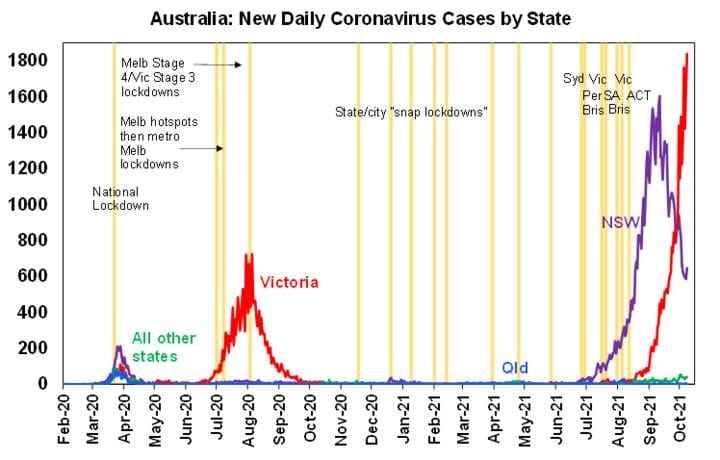
Source: covid19data.com.au, AMP Capital
- 69% of Australia’s whole population has now had at least one vaccine dose, which is more than the US. For first doses for adults, the ACT is now well above 90%, NSW is nearly at 90% (so much for the reported vaccine hesitancy), Victoria will reach 90% in around two weeks and Australia is now through 80%.
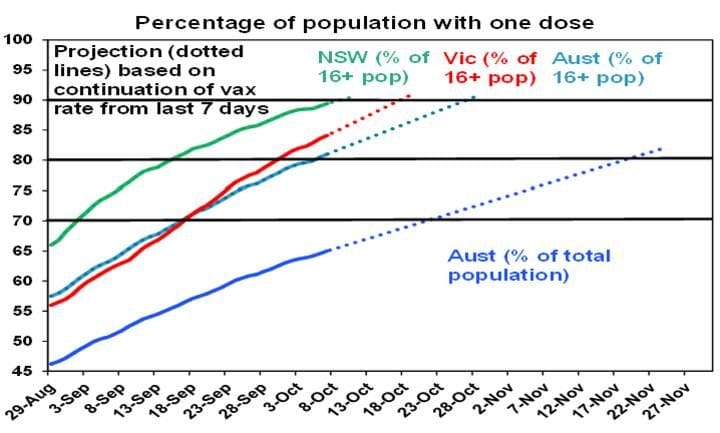
Source: covid19data.com.au, AMP Capital
- On the basis of projections based on current trends for first doses and the average gap between 1st and 2nd doses the following table shows when key vaccine targets will be met. NSW and the ACT (not shown) have already hit the 70% of adults double vax target and NSW will hit 80% around 20th October, Victoria will hit 70% around 26th October and Australia on average around 24th October.
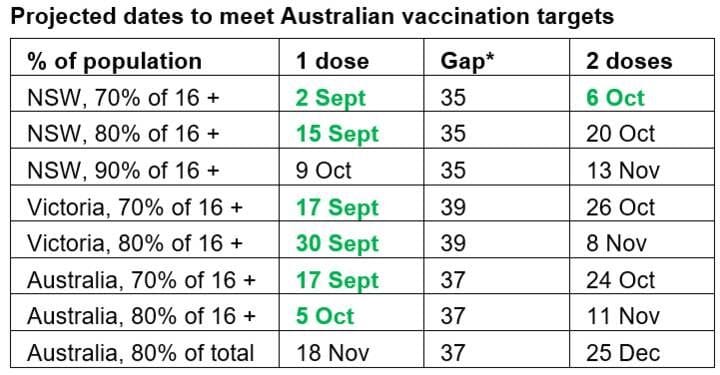
* Current gap in days between 1st and 2nd doses. Source: AMP Capital
- Singapore’s experience highlights the need for the reopening to be gradual. The experience in Singapore which is now seeing more than 3000 new cases a day after reopening highlights the risks involved in reopening too rapidly – as a sudden surge can quickly overwhelm the hospital system necessitating a reversal in the easing of restrictions. NSW’s decision to speed up its relaxation of social restrictions from Monday poses a bit of a risk on this front as still only 59% of the whole NSW population will have been fully vaccinated compared to 81% in Singapore – so this is something to watch.
- Meanwhile, vaccination is continuing to help keep serious illness down. Coronavirus case data for NSW shows that the fully vaccinated make up a low proportion of cases, hospitalisations and deaths.

Source: NSW Health, AMP Capital
- The level of deaths (the red line in the next chart) is running at around 20% of the level predicted on the basis of the previous wave (dashed line). On this basis the vaccines are helping save roughly 54 lives a day at present.
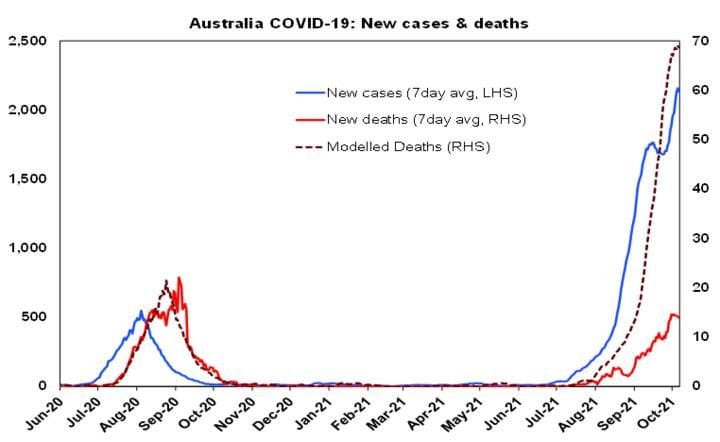
Source: ourworldindata.org, covid19data.com.au, AMP Capital
|










